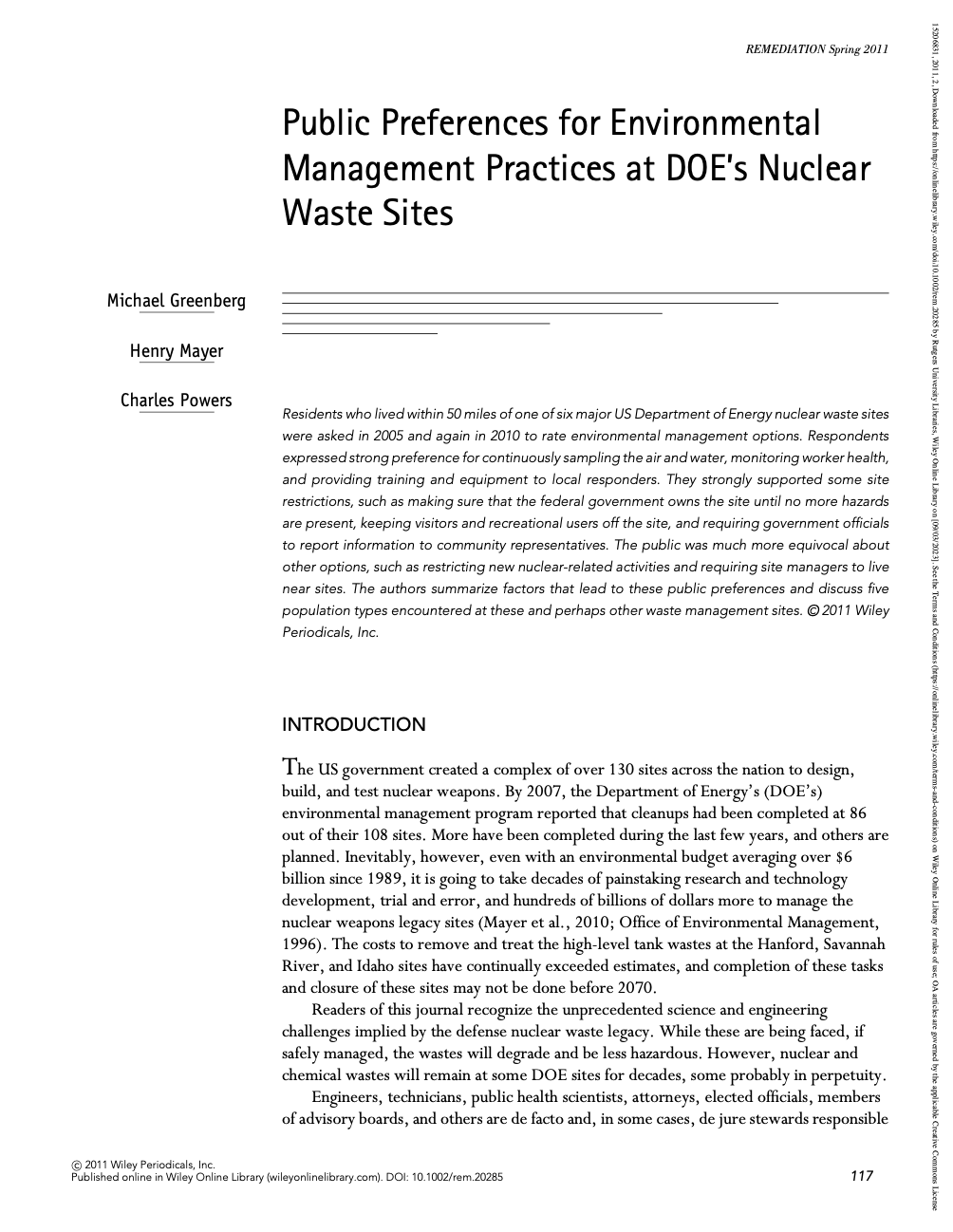Residents who lived within 50 miles of one of six major US Department of Energy nuclear waste sites were asked in 2005 and again in 2010 to rate environmental management options. Respondents expressed strong preference for continuously sampling the air and water, monitoring worker health, and providing training and equipment to local responders. They strongly supported some site restrictions, such as making sure that the federal government owns the site until no more hazards are present, keeping visitors and recreational users off the site, and requiring government officials to report information to community representatives. The public was much more equivocal about other options, such as restricting new nuclear-related activities and requiring site managers to live near sites. The authors summarize factors that lead to these public preferences and discuss five population types encountered at these and perhaps other waste management sites.
